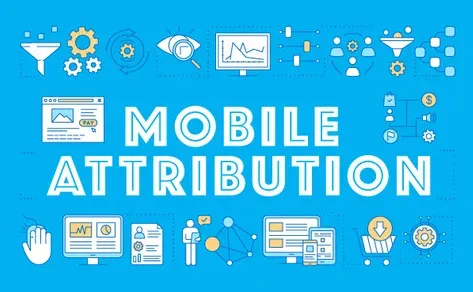Solutions
Teams
Built for your whole team.
Industries
Trusted by all verticals.
Mediums
Measure any type of ad spend
Platform
Use Cases
Many Possibilities. One Platform.
AI and Automation
The Always-on Incrementality Platform
Teams
Built for your whole team.
Industries
Trusted by all verticals.
Mediums
Measure any type of ad spend
Use Cases
Many Possibilities. One Platform.
AI and Automation
The Always-on Incrementality Platform
Last Touch Attribution is Not The Only Option

Mobile app tracking relied on the only available attribution model - Last Touch Attribution. Web advertisers had more options of attribution. Owning the domain (literally) allowed Advertisers to capture all inbound data and construct an attribution model suited to their own product and user funnel.
While Mobile App Tracking only allows developers to use Last Touch attribution, we wanted to introduce you with the various attribution models out there.
Last Touch Attribution is also referred to as "last-click". As the title implies, this model gives 100% credit to the last ad a user interacted with before conversion.
Example: A user finds the app Featured on the app store and installs it. The user clicked an ad on Twitter for your app a week prior to downloading, but didn’t install. In this example - Twitter will get 100% credit for the install.
Pros & Cons of Last Interaction Attribution
Last touch attribution is the easiest to implement and evaluate.
Last touch attribution works in real time.
The downside is that this model ignores everything that happens before the final touch. The engagement and touch points prior to that last touch will be just as important.
This model commonly causes over-attribution and over-crediting paid media for results that would have been organically achieved without paid media activities.

First Touch is similar to Last Touch, in that it gives 100% of the credit to one single ad engagement.
For example, if a user first finds your business on Unity, but engages with ads across several other vendors, then Unity gets all of the credit for any conversion that happens after that engagement.
Pros & Cons of First Interaction Attribution
The main reasoning of using First Click attribution is how simple and straightforward it is.
However, this model ignores the influence of any potentially important marketing channels that occur down the funnel.

The Last Non-Direct Interaction Attribution Model seems odd, but is a very useful model, especially to eliminate attribution fraud. While 100% of the value is still assigned to a single ad engagement, attributing to the engagement before the last one may eliminate a bias towards attribution gaming.
Direct downloads (Organics, Search) happen when users go directly to your app by search or clicking an icon of your app within the app store menus, which means this visitor already knows about your company.
How did they learn about your app? What prompted them to go to your app page? By ignoring the last click, you can better understand the influence of your marketing channels.
Pros & Cons of the Last Non-Direct Click Model
If users had multiple touch points prior to that last non-direct click, those are completely ignored.

With a Linear attribution model, the credit for a conversion is split equally between all the vendors and ad engagements the user had prior to conversion.
If a user interacts with ads on Unity, sees a video on YouTube, clicks a playable ad served via Liftoff, sees an ad on their Facebook social feed, and clicks an ad on Twitter before installing your app - All 5 touchpoints gets equal credit of 20%
Pros & Cons of Linear Attribution
Linear attribution cannot operate in real time, as only once conversion happens can the model assign values to all participants.

Time Decay attribution is similar to Linear attribution. Spreading the credit across multiple engagements. Unlike Linear attribution, the Time Decay model also takes into consideration when each touchpoint occurred.
User Engagements that occur closer to the time of conversion have more value attributed to them. The first engagement gets less credit, while the last engagement will get the most.
Pros & Cons of Time Decay Attribution

Customized attribution models as the title says it - are customized per company or product giving an Advertiser the opportunity to examine and learn more about their own user funnel to allocate credit based on traction.
Typically this model would require data science and machine learning for an Advertiser to correctly create a time series based on as much historical data as possible.
Pros & Cons of Time Decay Attribution

Attribution without context can lead to wrong decisions. Attribution is a simple mechanism trying to provide Advertisers with a means to track and give credit to provide reporting and some statistical information acting as a proxy to measuring performance.
However, attribution misses context, and without context, advertisers may confuse attribution as being “deterministic” to causation.

INCRMNTAL is an incrementality testing platform providing marketers with actionable insights to unlock the full value of their marketing spend. You can connect your TV tracking software to get insights over the value of your TV campaigns.
If you want to learn more, visit INCRMNTAL or book a demo today!

Maor is the CEO & Co-Founder at INCRMNTAL. With over 20 years of experience in the adtech and marketing technology space, Maor is well known as a thought leader in the areas of marketing measurement. Previously acting as Managing Director International at inneractive (acquired by Fyber), and as CEO at Applift (acquired by MGI/Verve Group)